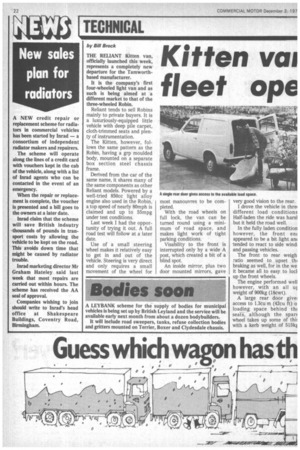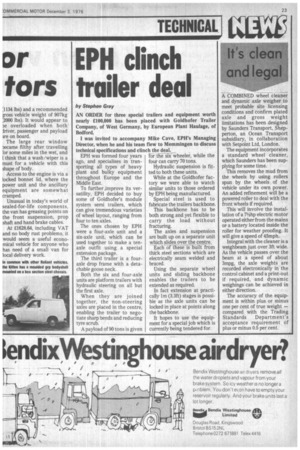Kitten vai fleet ope
Page 24

Page 25

If you've noticed an error in this article please click here to report it so we can fix it.
or tors
by Bill Brock
THE RELIANT Kitten van, officially launched this week, represents a completely new departure for the Tamworthbased manufacturer.
It is the company's first four-wheeled light van and as such is being aimed at a different market to that of the three-wheeled Robin.
Reliant tends to sell Robins mainly to private buyers. It is a luxuriously-equipped little vehicle with deep pile carpet, cloth-trimmed seats and plenty of instrumentation.
The Kitten, however, follows the same pattern as the Robin, having a grp moulded body, mounted on a separate box section steel chassis frame.
Derived from the car of the same name, it shares many of the same components as other Reliant models. Powered by a well-tried 850cc light alloy engine also used in the Robin, a top speed of nearly 80mph is claimed and up to 55mpg under test conditions.
Last week I had the opportunity of trying it out. A full road test will follow at a later date.
Use of a small steering wheel makes it relatively easy to get in and out of the vehicle. Steering is very direct and only requires a small movement of the wheel for most manouvres to be completed. With the road wheels on full lock, the van can be turned round using a minimum of road space, and makes light work of tight parking conditions. Visability to the front is interrupted only by a wide A post, which created a bit of a blind spot.
An inside mirror, plus two door mounted mirrors, gave very good vision to the rear.
I drove the vehicle in threi different load conditions Half-laden the ride was harsl but it held the road well.
In the fully laden condition however, the front en( appeared to be a bit light an .tended to react to side wind: and passing vehicles.
The front to rear weigh ratio seemed to upset thi braking as well, for in the we it became all to easy to loci up the front wheels.
The engine performed well however, with an all ur weight of 900kg (18cwt).
A large rear door give: access to 1.3cu m (42cu ft) o loading space behind th( seaTs, although the spare wheel takes up some of thi! with a kerb weight of 5154 :1134 lbs) and a recommended pross vehicle weight of 907kg :2000 lbs). It would appear to ae overloaded when both' Myer, passenger and payload Ire on board.
The large rear window Decame filthy after travelling 'or some miles in the wet, and [ think that a wash/wiper is a must for a vehicle with this shape of body.
Access to the engine is via a locked bonnet lid, where the power unit and the ancillary equipment are somewhat cramped.
Unusual in today's world of sealed-for-life components, the van has greasing points on the front suspension, prop shaft and hand brake cables.
At E1628.64, including VAT and no body rust problems, it would seem a useful economical vehicle for anyone who has need of a small van for local delivery work.






























































































































